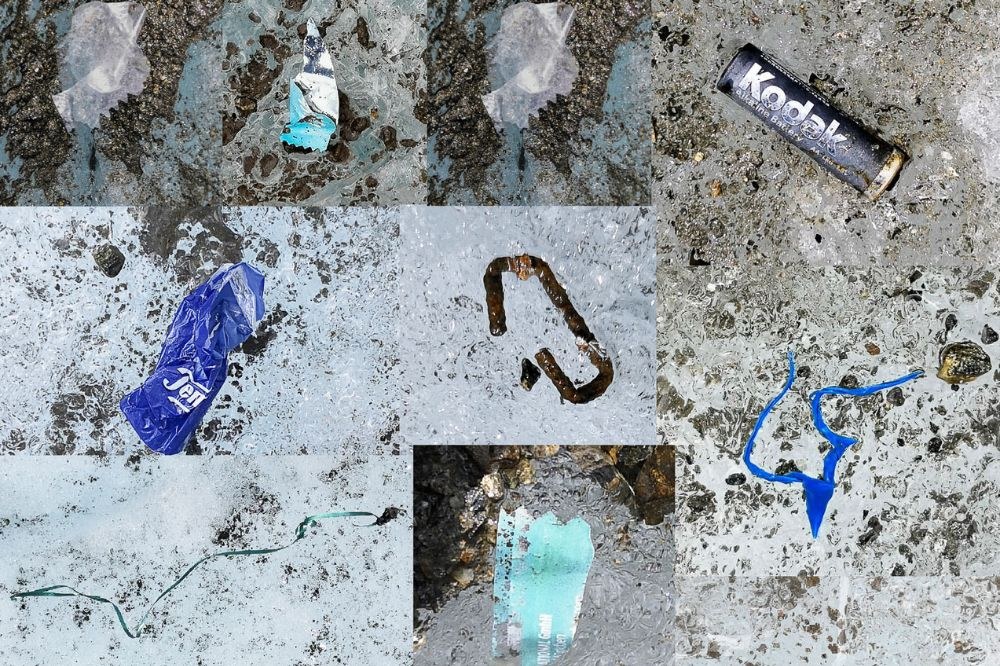Microplastics in the Alps
Plastic pollution continues to threaten our health and our most precious landscapes. The latest findings show that microplastics can even be found on the highest Alpine peaks.
Although abundant research projects and initiatives exist for the protection of the oceans, plastic also poses a problem in the Alpine regions and mountainous landscapes in general. The research here is limited: nevertheless, numerous microplastics have been discovered in the Alps recently, endangering both the environment and animal habitats. The AlPlast research project, funded by the Austrian Academy of Sciences, has been investigating the flow path of waters in order to calculate the concentration of microplastics in the Austrian Alpine region: it found 20 tonnes of microplastics smaller than 5 mm. But Austria is not the only country affected: 14 thousand tonnes are discovered in Swiss soil and water every year. These fragments mainly come from nearby cities. Meteorologist Andreas Stohl investigated how substances are transported in the atmosphere and how microplastics are distributed by wind and weather, being blown directly from the oceans to the highest peaks of the Alps.
How to end plastic pollution
No agreement could be reached at the UN plastic pollution summit, held in December 2024, on the plan to eliminate plastic pollution. All hope is not lost, however: a recent study detected a new type of microbe capable of growing on plastic and digesting it, even at low temperatures. The “super mushroom 943”, discovered by Joel Rüthi, contains special enzymes that are not only capable of decomposing bioplastic, but of doing so at very low temperatures. However, these new findings may take a while before they are acted upon. In addition, numerous initiatives, mainly in Germany and Austria, have been launched to combat littering in the Alpine regions. Some encourage people to help with the “CleanUP Days”, where mountain enthusiasts go out on the hiking trails and pick up rubbish and other waste; another project – CLEANALP – in the Italian Alps provides for awareness-raising measures in addition to the cleaning of hiking trails. In Austria, the “DreckSpotz” app was developed to track down rubbish in the wilderness. Campaigns such as “Keep the mountains clean” in France spread awareness via social media.
Sources and further information:
www.oeaw.ac.at/news/mikroplastik-in-oesterreichs-fluessen (de), www.earthisland.org/journal/index.php/articles/entry/microplastics-are-everywhere-even-the-swiss-alps/## (en), www.swissinfo.ch/eng/sci-tech/nanoplastics-travel-long-distances-to-the-alps/47339352 (en), https://theweek.com/news/environment/960794/microbes-found-in-alps-that-can-digest-plastics-at-low-temperatures (en), https://futurezone.at/science/arktis-gletscher-wie-kommt-mikroplastik-dorthin-andreas-stohl-schadstoffe-luftverschmutzung/402845818 (de), www.klimareporter.de/international/rettungsboot-der-erdoel-lobby (de), www.klimareporter.de/international/saudi-arabien-verhindert-plastikabkommen-vorerst (de), www.srf.ch/wissen/nachhaltigkeit/unglaubliche-entdeckung-schweizer-forschende-finden-einen-pilz-der-plastik-frisst (de), https://www.worldwildlife.org/press-releases/un-plastic-pollution-summit-fails-to-reach-agreement-despite-majority-supporting-ambitious-measures (en) https://www.areeprotettealpimarittime.it/news/3065/cleanalp-una-ricerca-lunga-pi-475-km (it), www.cleanalp.com/news/l-impatto-dell-inquinamento-da-plastica-nelle-alpi (it), https://naturschutz.ch/news/natur/ewigkeitschemikalien-werden-schweiz-milliarden-kosten/189204?mc_cid=d86d3574c8&mc_eid=123c555c18 (de)



